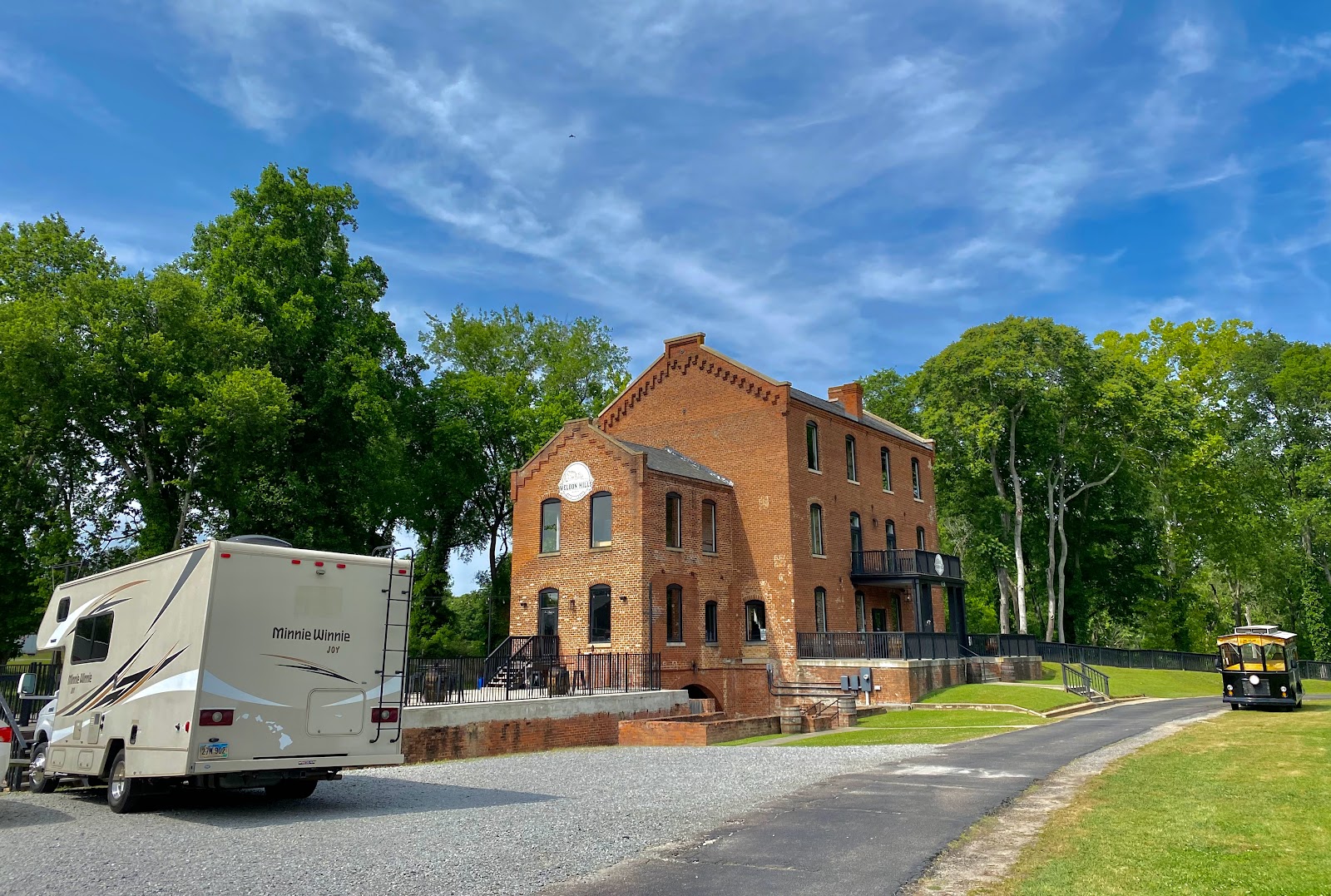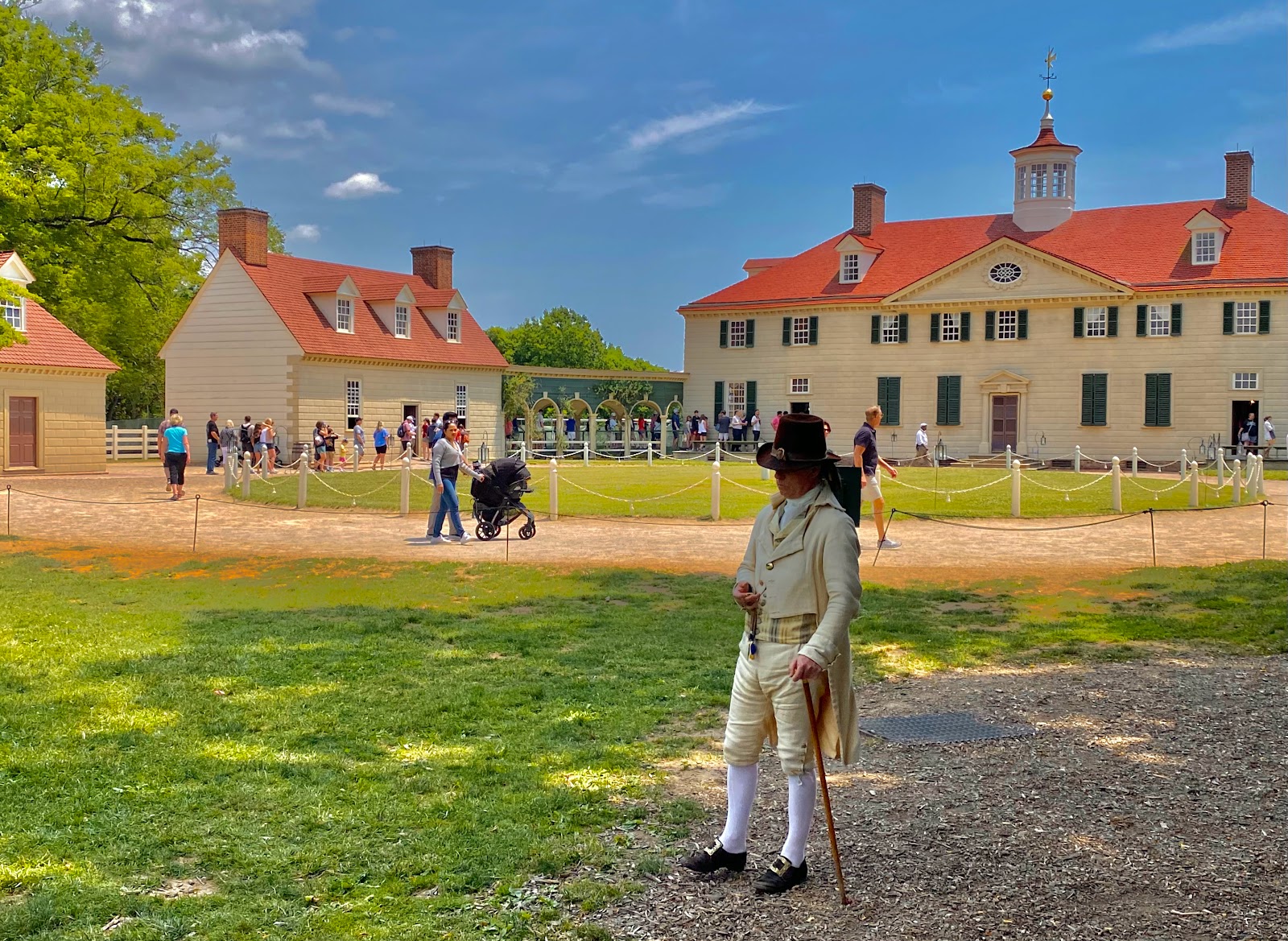We had been to Kentucky a few times before, but it was the only state we had never slept in. Now we not only know what it’s like to sleep in Kentucky, we even know what it’s like to sleep on the grounds at the Kentucky State Capitol! We now also know who the Shakers were and why they are no more. And we learned that, as nice as Kentuckians are, our favorite Kentuckians are the ones from Indiana and Ohio.
 |
| Bourbon is everywhere in Kentucky |
We spent our first Kentuckian night at the Carter Caves State Park. We toured three different caves, including one with a waterfall and one that was used to mine saltpeter during the War of 1812. There is also a very cool natural tunnel. This state park is nothing to sneeze at, but was great to snooze at.
 |
| Natural Bridge (or Tunnel?) at the Carter Caves State Park |
We spent our second night in Kentucky at the “Abettor Brewing Company”. At first,we thought that was a weird name. Now that I understand the double entendre, I think it’s a better brewing company name.
 |
| "Abettor Brewing Company" is a better brewing company |
Caves and beer are accepted in Kentucky, but the state law says that after two days in Kentucky, you have to do something related to bourbon or horses. We are pretty sure that drinking our Bourbon from Virginia didn’t count, so we visited the Kentucky Horse Park in Lexington. We enjoyed learning about the evolution of horses, about the different breeds and actually meeting some Triple Crown winners.
 |
| At the Kentucky Horse Park |
Amongst other things, the Kentucky Horse Park specializes in serving as a retirement home for champion race horses. I think it’s really nice that the horses who made millions of dollars in prize money for their owners get to retire in comfort and are celebrated as rock stars long after their racing careers. We got to meet “Funny Cide”, who apparently was a very beloved underdog because he was owned by a bunch of regular folks instead of some rich guy. Because there were so many owners, they traveled in a school bus to the races, rather than in the customary limousine.
 |
| I never realized how similar horse and human skeletons are |
We thought the Horse Park was interesting, but I can only imagine how fascinating this place must be for somebody who enjoys horses as much as we enjoy presidents. Speaking of presidents: Lincoln was born here, but left at age 7, so he is rightfully claimed by Illinois. Other than that, there is not much presidential history in Kentucky, but that doesn’t stop us. If you think we’d retire from road trips when we have been to all presidential libraries and birthplaces, think again. In Lexington alone we visited the homes of Mary Todd Lincoln and of Henry Clay. And if we try to visit all the sites of first ladies and of people who tried but never became president, we’ll never run out of sites to see.
 |
| Mary Todd Lincoln House in Lexington |
Up until that point, Kentuckians had been very nice to us. But of course it pales in comparison to the hospitality of our friends Elke & Mark at their Kentucky lake house. By coincidence, we arrived there on my birthday and they were not just willing, but eager to play games with us. My favorite was “Piece o’Cake”, my kind of birthday cake and no sugar headache!
 |
| Birthday Cake game with Elke & Carl |
They don’t just have game loving neighbors like our new friend Carl, they also have neighbors willing to put on a 4th of July party a week early, just so these two new Americans can celebrate two Independence Day parties in their first year as citizens.
 |
| Just a little backyard fireworks show |
 |
| Happy Birthday, America! |
The only risk of staying at Elke’s of course is that you could starve. They don’t offer their guests much to eat, other than breakfast, lunch, dinner and a few snacks in between. But that’s where our friend Brad came to the rescue, driving all the way to Kentucky with 20 pounds of the best non-German potato salad we ever had.
 |
| Breakfast with old and new friends |
We had heard about the “Shakers” many times, but really had no idea who they are. If you are equally unaware, I strongly recommend visiting the “Shaker Village of Pleasant Hill” by Harrodsburg, KY. Or, if that’s not on your route, you can just read the next few paragraphs. It won’t be as much fun as visiting this fabulous site, but at least you’ll know what’s shaking:
Technically, Shakers are called “The United Society of Believers in Christ’s Second Appearing”, but that’s not a catchy name. The term Shaker was first a derogatory name based on their spontaneous dancing during worship. But when they realized they needed a catchier name to recruit people, they embraced the term “Shakers”.
 |
| Garden and home of the hardworking, forward thinking, celibate, dancing Shakers |
They came to America in 1774, just in time for the revolution. This “Shakertown” was one of their Utopian Societies, where they lived as a commune, sharing all the work and all the wealth. They were hard working and pretty successful for almost a century. But there were three reasons for their eventual downfall:
1. As pacifists, they did not fight in civil war, but they helped the hungry and the wounded on either side, depleting their own resources.
2. They emphasized teaching young members numerous skills and crafts, many left when they grew up and could put those skills to use for their own benefit instead of the whole community.
3. They demanded celibacy from all of their members, eliminating the most obvious recruiting option.
 |
| Excellent tour at the Shaker Village |
Shakers still exist, but there’s only two elderly Shakers in Maine left, of course both of them celibate. Soon, there will be no Shakers left, but at least their crazy ideas of equality for all genders and races is slowly catching on.
Old Fort Harrod State Park is a reconstruction of the first European outpost in what is now Kentucky, but was the wild west part of Virginia in 1775. The history of this place is slightly different, but the exhibits were familiar: We’ve seen a lot of historical craftsmen and women, but we probably need to see a few more before we can make our own soap, weave our own cloth or forge our own tools.
 |
| Old Fort Harrod State Park |
The building from the outside is your normal state capitol, impressive, but not unique. But we loved the inside with the open halls and staircases and the dome actually changes colors. There is a larger than life Lincoln statue in the center of the rotunda. It’s nice they embrace the “Great Emancipator”, even though he left the state at age seven. Up until 2020, they also honored the other Kentucky born president, even though he was the president of the sworn enemy of the United States. Now there is a prominent empty space. Knowing Kentucky, they probably will fill it soon with a horse or a barrel of bourbon.
 |
| Kentucky State Capitol in Frankfort |
 |
| Impressive Covid Memorial on the Kentucky Capitol grounds, first one we have seen anywhere |
I will not bore you with all the details of the other museums and historical buildings we toured in Frankfort. But here’s the most interesting little bit of history, which I will share so that we don’t have an unfair advantage in the next trivia game: No state governor has ever been assassinated. But a governor has died of an assassin’s bullet. What? How is that possible?
In November 1899 William Goebel narrowly lost the election, but did not concede. While the investigation was still ongoing, he was shot. The very next day, the General Assembly overturned the results and Goebel was sworn in immediately, only to die three days later. So he wasn’t a governor when he was shot, but he did become the only governor to die by assassination.
Still think we are more divided than ever today?
Since this all happened over a century ago, I think of it as interesting history…so why did I title this blog “from Lucky to Yucky”? Well, we felt pretty lucky that we got to experience this beautiful state and spend time with old and new friends. We also felt lucky to find this beautiful campground right at the confluence of the Kentucky and Ohio river for our last night in Kentucky…and then it turned yucky:
Our toilet brush has a brush that is screwed on. Or I should rather say that was screwed on. Now it’s in our black water tank and all our attempts to get it out have been unsuccessful. Unfortunately, a toilet brush head is almost perfectly designed to clog a drain pipe and Joy’s drain pipe is almost perfectly designed not to be easily accessible. So tomorrow we will try to get some professional help, so that we are just happy-go-lucky again, not happy-and-yucky-go-lucky.
Aloha,
Chris & Sandra




































